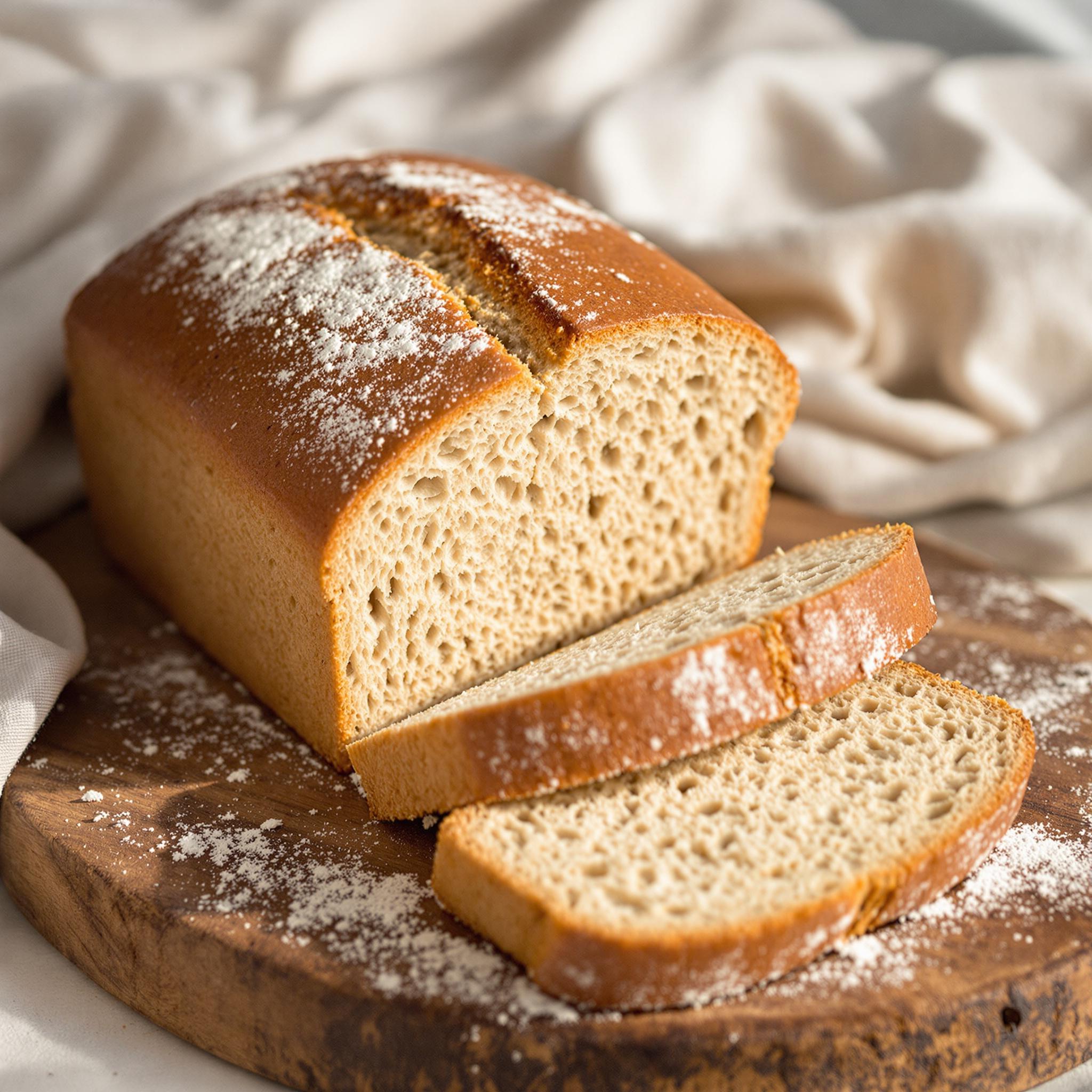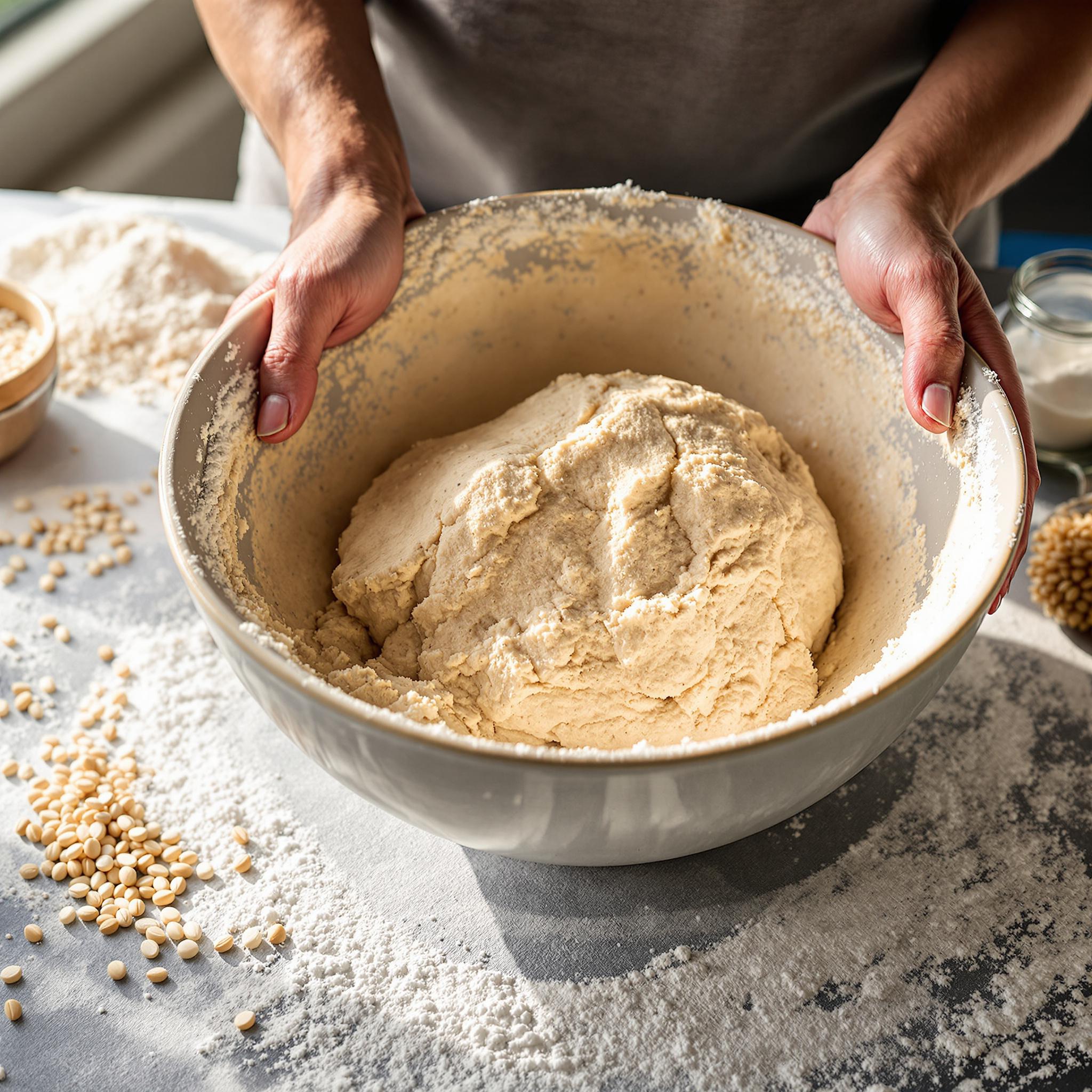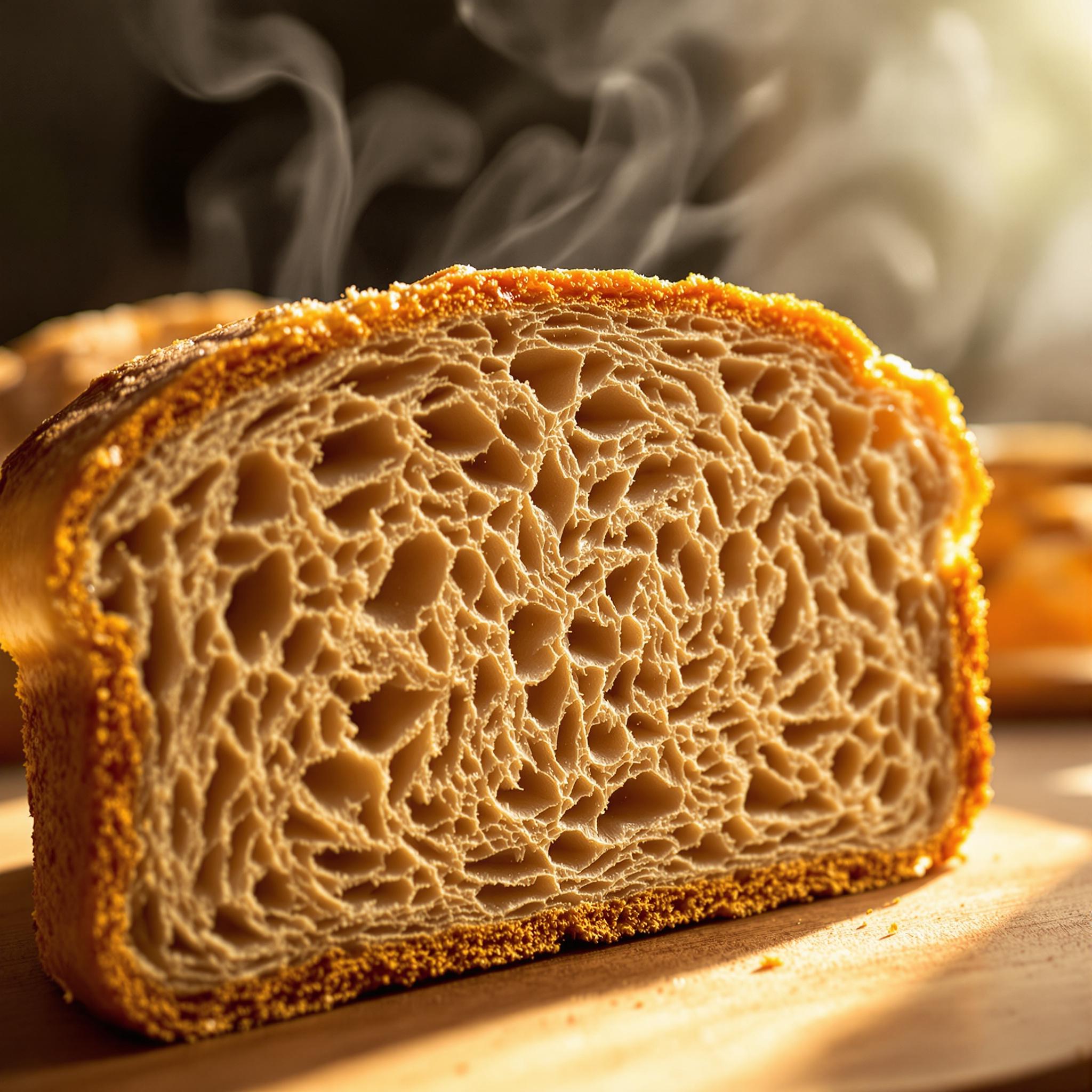Introduction to Simple Whole Wheat Bread
There’s something incredibly satisfying about baking your own bread. The aroma of fresh-baked Simple Whole Wheat Bread filling your kitchen is pure magic, and the taste? Absolutely unbeatable. I first tried making this recipe during a cozy weekend at home, and it quickly became a family favorite. Whether you’re a seasoned baker or just starting out, this wholesome loaf is perfect for anyone looking to enjoy healthier homemade bread.
The History Behind Simple Whole Wheat Bread
Whole wheat bread has been a staple in many cultures for centuries. It dates back to ancient times when people began grinding grains into flour and baking them over fire. Unlike refined white bread, whole wheat bread retains all parts of the grain—the bran, germ, and endosperm—making it not only nutritious but also deeply flavorful. In modern kitchens, this hearty bread has gained popularity as more people embrace healthier eating habits without sacrificing taste.
Why You’ll Love This Simple Whole Wheat Bread Recipe
What makes this Simple Whole Wheat Bread stand out is its balance of flavor and texture. The nutty undertones of whole wheat pair beautifully with the soft crumb inside. Plus, it’s surprisingly easy to make! Even if you’ve never baked bread before, this recipe guides you through every step. And trust me—there’s nothing quite like slicing into a warm loaf you made yourself.
Perfect Occasions to Prepare Simple Whole Wheat Bread
This loaf is versatile enough for any occasion. Serve it alongside soups and stews for a comforting dinner, pack slices for school lunches, or enjoy it toasted with butter and jam for breakfast. I love bringing a freshly baked loaf to potlucks—it always sparks conversation and disappears fast!
Ingredients for Simple Whole Wheat Bread
- 3 cups whole wheat flour
- 1 packet (2¼ teaspoons) active dry yeast
- 1½ cups warm water (about 110°F)
- 2 tablespoons honey or maple syrup
- 2 tablespoons olive oil
- 1 teaspoon salt
Substitution Options for Simple Whole Wheat Bread
- Instead of honey, use agave nectar or brown sugar.
- Swap olive oil for melted butter or coconut oil.
- If you don’t have whole wheat flour, try using half whole wheat and half all-purpose flour for a lighter texture.
Preparation Steps for Simple Whole Wheat Bread
Step 1: Activate the Yeast
Start by dissolving the yeast in warm water. Make sure the water isn’t too hot; otherwise, it might kill the yeast. Add the honey or maple syrup to the mixture and let it sit for about 5-10 minutes until it becomes frothy. This step is crucial because it ensures your dough will rise properly. Pro tip: If the mixture doesn’t foam, your yeast may be expired, so double-check before proceeding.
Step 2: Mix the Dough
In a large mixing bowl, combine the whole wheat flour and salt. Pour in the activated yeast mixture along with the olive oil. Stir everything together until a shaggy dough forms. At this stage, the dough will feel sticky and rough, but that’s perfectly normal. Kneading will transform it into a smooth, elastic ball.
Step 3: Knead the Dough
Turn the dough onto a lightly floured surface and knead for about 8-10 minutes. As you work the dough, notice how it changes from sticky and lumpy to silky and springy. This process develops gluten, which gives the bread its structure. If the dough feels too dry, add a splash of water; if it’s too sticky, sprinkle in a bit more flour. Pro tip: Use the heel of your hand to push the dough away from you, then fold it back and rotate—a classic kneading technique.
Step 4: Let the Dough Rise
Place the kneaded dough in a greased bowl, cover it with a clean kitchen towel, and let it rise in a warm, draft-free spot for about 1-2 hours. During this time, the yeast will work its magic, causing the dough to double in size. Watching the dough puff up is one of my favorite parts—it’s like witnessing a little miracle in your kitchen.
Step 5: Shape and Bake
Once the dough has risen, punch it down gently to release any air bubbles. Shape it into a loaf and place it in a greased bread pan. Let it rise again for another 30-45 minutes. Preheat your oven to 375°F (190°C) and bake the loaf for 30-35 minutes until golden brown. You’ll know it’s done when the bottom sounds hollow when tapped. The smell of freshly baked Simple Whole Wheat Bread is absolutely irresistible!
Chef’s Tip for Perfect Whole Wheat Bread
To enhance the flavor of your Simple Whole Wheat Bread, let the shaped loaf rest overnight in the refrigerator. This slow fermentation process deepens the taste and improves the texture. Just remember to bring the dough back to room temperature before baking.
Time Required for Simple Whole Wheat Bread
- Prep Time: 20 minutes
- Rising Time: 2-2½ hours
- Baking Time: 30-35 minutes
- Total Time: About 3-3½ hours
Nutritional Information for Simple Whole Wheat Bread
Each slice contains approximately:
- Calories: 120
- Protein: 4g
- Fat: 2g
- Carbohydrates: 20g
- Fiber: 3g
Extra Information About Whole Wheat Flour
Did you know that whole wheat flour contains more fiber and nutrients than refined flour? That’s because it includes the bran and germ, which are removed during the refining process. This makes whole wheat bread not only healthier but also more filling.
Necessary Tools for Making Simple Whole Wheat Bread
- Large mixing bowl
- Measuring cups and spoons
- Kitchen towel
- Bread pan
- Oven
Storage Instructions for Simple Whole Wheat Bread
To keep your Simple Whole Wheat Bread fresh, store it in an airtight container or plastic bag at room temperature for up to 3 days. Avoid leaving it uncovered, as exposure to air can cause it to dry out.
If you want to extend its shelf life, wrap the cooled loaf tightly in plastic wrap and freeze it for up to 3 months. Simply thaw it at room temperature when ready to eat.
For best results, reheat slices in a toaster or oven to restore their crispiness. There’s nothing better than enjoying a warm slice of homemade bread!
Tips and Tricks for Better Whole Wheat Bread
- Add a tablespoon of vital wheat gluten to improve elasticity.
- Use filtered water to avoid any off-flavors from tap water.
- Brush the top of the loaf with melted butter after baking for a softer crust.
Serving Suggestions for Simple Whole Wheat Bread
- Serve toasted with avocado and poached eggs for a hearty breakfast.
- Pair it with soups, salads, or pasta dishes for a wholesome meal.
Healthier Alternatives for Simple Whole Wheat Bread
If you’re looking to tweak this recipe for specific dietary needs, here are some ideas:
- Gluten-Free Option: Replace whole wheat flour with a gluten-free flour blend and add xanthan gum for structure.
- Low-Sugar Version: Reduce the honey or omit it entirely for a less sweet loaf.
- Vegan-Friendly: Use plant-based oil instead of butter and ensure your sweetener is vegan-certified.
- Seed Lover’s Loaf: Mix in sunflower seeds, flaxseeds, or chia seeds for added crunch and nutrition.
- Herb-Infused Bread: Add dried herbs like rosemary or thyme for a savory twist.
- Spelt Flour Substitute: Swap whole wheat flour with spelt flour for a slightly nuttier flavor.
Common Mistakes to Avoid When Baking Whole Wheat Bread
Mistake 1: Using Water That’s Too Hot
Yeast is sensitive to temperature, and water that’s too hot can kill it, preventing your dough from rising. Always aim for lukewarm water around 110°F. Pro tip: Test the water on your wrist—it should feel comfortably warm, not scalding.
Mistake 2: Skipping the Kneading Process
Kneading is essential for developing gluten, which gives bread its chewy texture. Without proper kneading, your loaf might turn out dense and flat. Set a timer and commit to the full 8-10 minutes—it’s worth the effort!
Mistake 3: Overloading on Extra Ingredients
While adding mix-ins like nuts or seeds can enhance flavor, too many can weigh down the dough and affect its rise. Stick to small amounts and distribute them evenly throughout the dough.
Frequently Asked Questions About Simple Whole Wheat Bread
Can I Use Instant Yeast Instead of Active Dry Yeast?
Yes, you can substitute instant yeast for active dry yeast in equal amounts. Instant yeast doesn’t require activation, so you can mix it directly with the dry ingredients.
How Do I Know When the Dough Has Risen Enough?
The dough should roughly double in size and feel light and airy. Press a finger into the dough—if the indentation stays, it’s ready to move to the next step.
Why Is My Bread Dense?
Dense bread often results from under-kneading, insufficient rising time, or old yeast. Ensure you follow each step carefully and check the expiration date on your yeast packet.
Can I Make This Recipe in a Bread Machine?
Absolutely! Follow your machine’s instructions for adding ingredients and select the whole wheat setting if available.
What Can I Do With Leftover Bread?
Turn stale slices into breadcrumbs, croutons, or French toast. They’re also great for making bread pudding or savory stratas.
Does Whole Wheat Bread Freeze Well?
Yes, it freezes beautifully. Wrap it tightly in plastic wrap and store it in a freezer-safe bag for up to 3 months.
How Long Should I Let the Bread Cool Before Slicing?
Allow the bread to cool completely on a wire rack for at least 1 hour. Cutting it too soon can result in a gummy texture.
Can I Add Sweeteners Other Than Honey?
Definitely! Maple syrup, molasses, or even mashed bananas work well as alternatives.
Why Does My Bread Have a Tough Crust?
A tough crust usually happens when the bread bakes too long or at too high a temperature. Try reducing the baking time or covering the loaf with foil halfway through.
Is Whole Wheat Bread Healthier Than White Bread?
Yes, whole wheat bread retains more nutrients and fiber compared to white bread, making it a healthier choice overall.
Conclusion
Baking Simple Whole Wheat Bread is a rewarding experience that fills your home with warmth and delicious aromas. From its rich history to its versatility in meals, this loaf is a true gem in any kitchen. So roll up your sleeves, gather your ingredients, and give this recipe a try—you won’t regret it!



